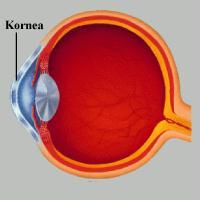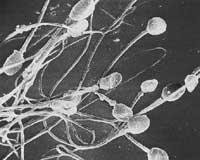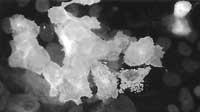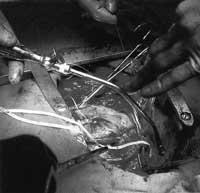Biological DIY
2000/01/11 Roa Zubia, Guillermo - Elhuyar Zientzia

The glass of the eye window is the cornea. The objective of this transparent fabric in the front of the eye is to allow light to enter, but only light. It is a powerful protection against dust and debris. However, unlike building crystals, the cornea is not easily cleaned outwardly when the origin of dirt is a disease or injury. In these cases, the person's vision is avoided and in some cases it can be blinded. To avoid this, surgeons can put healthy corneas in the place of the wounded, but it is very difficult to get them. Most of the results obtained are intended for this, so researchers cannot sufficiently address studies and research. In addition, there is nothing left to do toxicity studies. In order to carry out all these works, laboratories usually have to test in rabbits.
Made in laboratory

Canadian and US researchers come together to carry out a curious project about it. May Griffith, who works at the Eye Institute of Otawa University, and Mitchell Watsky, of the School of Medicine at Tenesse University in Menphis, want to make human corneas. To do this, human cornea cells have grown in laboratories. According to experts, artificially formed corneas at the moment are not incorporated into anyone, but they can serve to investigate. Toxicologists can examine them as if they were from the injured eyes, thus decreasing the use of animal corneas.
The initial objective of the researchers was to clarify the effects after surgery, why some corneas did not produce scars after laser treatment. The human corneas obtained for research were obsolete. Therefore, it was decided that the corneas grow in laboratories.
Three types of cells can be found in corneas: epithelial (which form the outer skin), keratocytes (centered), and endothelial (internal surface). In the first step scientists formed stores of this type of cells through the genes of viruses that cause a constant synthesis. Once the warehouse was finished, the characteristics of the cells were assessed to ensure that they are unable to grow cancer and are able to grow in a medium called soft agar.
To form the corneas a thin layer of endothelial cells was formed that were then covered with keratocytes and proteins. Above this the layer of epithelial cells was added and allowed to mature within two weeks. Epithelial cells were located at the boundary between air and fluid, as occurs in a real cornea. The result was a transparent tissue, with a similar tendency to the human cornea. For example, when weak detergent was added, genes were activated to heal wounds, as in human corneas. Strong detergents sprayed the cornea to the extent that it occurs in humans and rabbits, or similar.
To carry out these last experiments, the company Procter Gamble of Cincinnati put money in order to develop new ways of measuring toxicity without using animals in the long term. The company's steps were followed by animal rights activists. With the implementation of such projects it is expected to seek the substitute for the Draize test. This test measures irritation to chemicals by using rabbits.
Alan Goldberg, from John Hopkins University, works in a center where alternatives to animal testing are sought. In his opinion, artificial corneas still cannot replace the Draize test, but we must learn to make them in large productions and ensure that they continue to act like humans. In this direction are the company Procter Gamble, the large company Unilever and the Institute of In Vitro Sciences of Maryland.
Pending quality control
Cells are not ready to be used in transplants. Although they do not show signs of cancer, we must observe what happens in the long term. On the other hand, we must take care of other characteristics, such as the question of immunological response and long-term transparency. The corneas explain the characteristics of their use in transplants, but the path that will travel until its real use is still long.
As long as it is not achieved, laboratory tissues could give a great boost to research on corneas. They could be used as a model system and start answering a lot of key questions.

Gai honi buruzko eduki gehiago
Elhuyarrek garatutako teknologia






